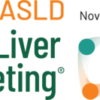Focus on Liver Oncology
Metastasis – the dissemination of cancer cells from a primary tumour to other sites in the body – is the major cause (>90%) of cancer-associated death (Chaffe et al. 2011, Valastyan et al. 2011). More specifically, metastasis to the liver is a common event in multiple cancer types and is a leading cause of death in gastrointestinal cancers, including colon cancer and pancreatic cancer, but also melanoma and breast cancer (Brodt, 2016). The types of cancer that often spread to the liver are: bowel cancer, breast cancer, lung cancer, ovarian cancer, stomach cancer, pancreatic cancer and melanoma.
Pancreatic Cancer
The incidence of pancreatic cancer is on the rise with 459,000 new patients per year. It is the seventh most common cause of cancer-related death (Globocan 2018). The main factors for the disease are not really identified. Limited therapeutic options are available at advanced stages, making pancreatic cancer a significant unmet medical need.
The most effective treatment is surgical resection, only possible for 15% to 20% of patients at diagnosis. In case of advanced disease, the main option remains cytotoxic chemotherapy, such as FOLFIRINOX or Nab-paclitaxel + Gemcitabine, but low survival rates are still observed: median overall survival was 11.1 months and 8.5 months with FOLFIRINIX and Nab-Paclitaxel + Gemcitabine, respectively. For second-line chemotherapy, only the combination Nanoliposomal irinotecan plus 5-FU/LV was approved by FDA for patients after progression with gemcitabine-based therapy. The 5 year-OS rate for late stages PDAC is approximately 3%.
Colorectal Cancer
The incidence of colorectal cancer (CRC) is 1.1 million new patients each year and it is the second most common cause of cancer-related death (Globocan 2018). The 5 year-OS is 63% with a median OS of 30 months. For metastatic CRC, the 5 year-OS rate decreases at less than 10%. More than half of patients develop liver metastases. The complete resection of limited liver metastasis is associated with 5-year OS exceeding 50% but only 15% to 20% of patients have resectable liver metastasis at presentation (Datta et al, 2019). Liver metastasis has been reported in approximately 25 % of patients upon primary tumor diagnosis and in another 40-50% of patients at later stage (Wang et al. 2017).
In advanced disease, systemic chemotherapies (cytotoxic drugs with or without targeted therapies) are available, according to histology results and prognostic biomarker (BRAF/KRAS/ microsatellite instability status) and are transformative in the prognosis. Moreover, chemotherapy rarely results in a cure in CRC patients with initially unresectable liver metastasis with median OS of 22-24 months and ORR in the second-line setting of 10% to 30%. Some other therapies are validated in 2nd (EGFR inhibitor) and 3rd lines (regorafenib and trifluridine tipiracil) for patients with progressive disease. Despite those therapeutic options, many patients will progress eventually and, as no longer eligible for curative surgery, they will be candidate for novel therapies.







